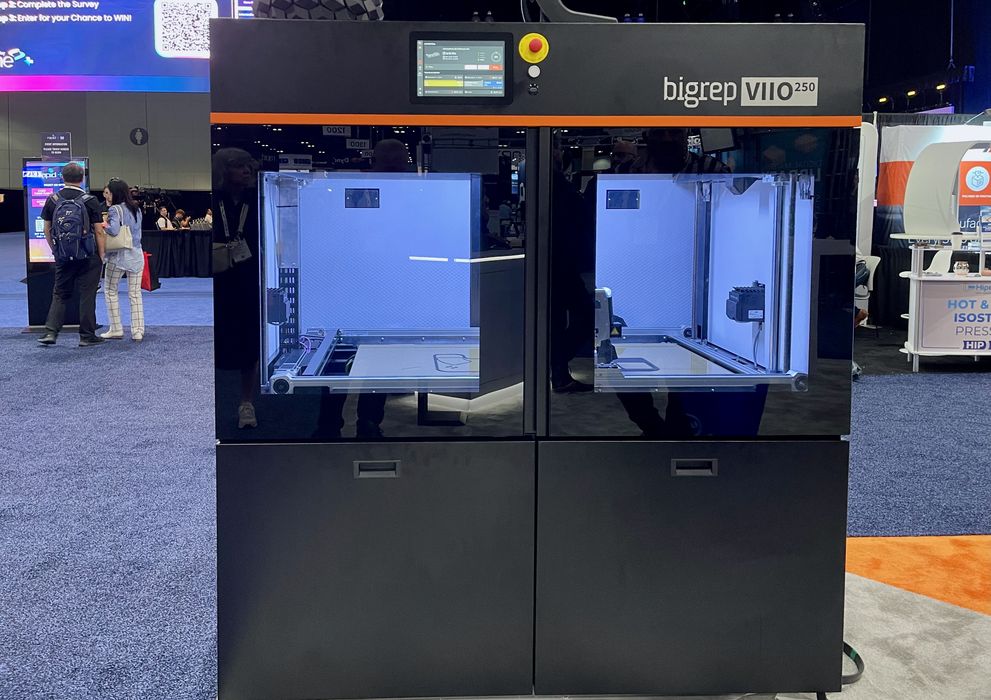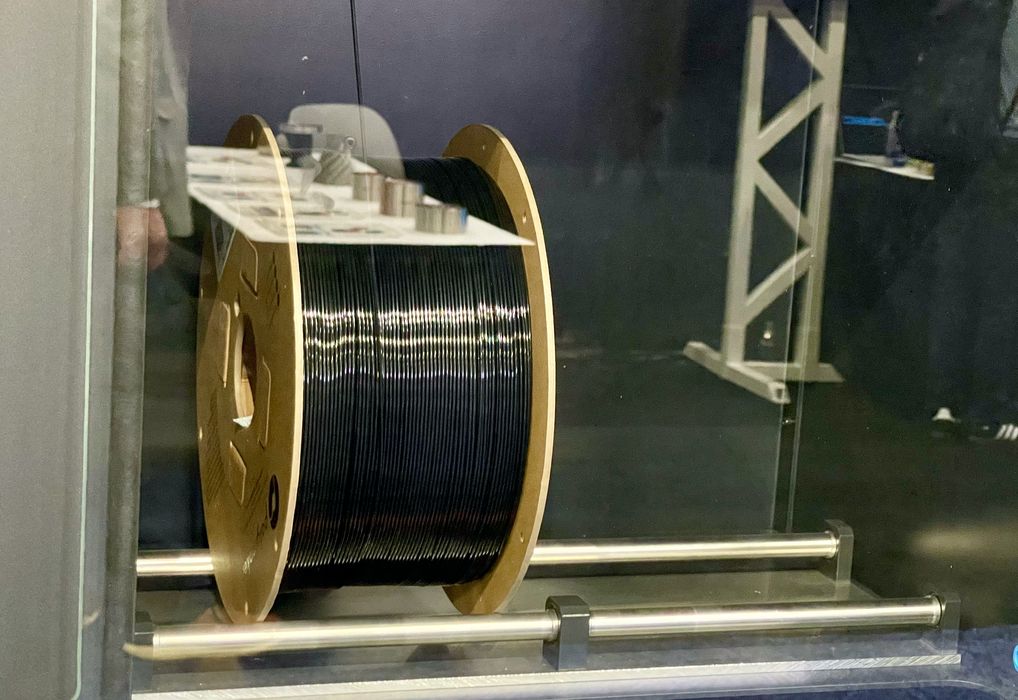
BigRep’s new VIIO 250 G2 large format 3D printer has quite a few interesting features.
The company announced the device a few weeks ago, but we had a chance to see it in person. The device is targeted at “automated production”, and it includes several features that address those requirements.
Visually, the VIIO 250 G2 is similar to the company’s earlier G2 model, but there are a number of differences inside. The build volume, for example, is identical at 1000 x 500 x 500 mm.
The VIIO 250 G2 uses Klipper-like firmware to achieve high speed 3D printing, although it does not have a CoreXY motion system. That’s likely due to the massive size of the build volume: it has the same kinematics as the G2.
The high print speed is “only” 200mm/s on the VIIO 250 G2’s spec sheet, which might sound a bit slow as compared to recent desktop FFF devices. However, keep in mind that this is a large format 3D printer. It uses a standard nozzle diameter of 0.6mm (0.4 and 1.0 mm are possible options). Through that fat nozzle will flow an enormous amount of polymer during printing, far more than you’d see on a “fast” 3D printer printing 0.1mm layers at 600mm/s.
As have BigRep’s previous machines, the VIIO 250 G2 uses 2.85mm filament. For large format machines requiring massive amounts of polymer, the thicker filament makes sense. I don’t understand why the much smaller desktop machines still use 2.85mm filament. The extrusion system seems to be capable of up to 32 cubic mm per second, comparable to the highest volume desktop devices of recent times.
The VIIO 250 G2 includes dual “smart manufacturing extruders”, that can each hit 350C. That temperature, combined with the enclosure and a print plate that hits 120C, enables the device to print a very wide range of engineering materials. BigRep lists ASA, BVOH, HI-TEMP, HI-TEMP CF, PA12 CF, PA6/66, PETG, PLA, PLX, PRO HT, and TPU 98A as possible, but they’re open for third part filaments and can likely handle almost anything.
The dual extruders draw filament from on board storage bays, of which there are four. This enables near-continuous 3D printing operations if you switch from one spool to another when the first runs out.

Here you can see a spool in one of the bays. Note that the VIIO 250 can handle large-format spools, which are often necessary for huge and lengthy print jobs. Also note that the method used by BigRep to mount the spools is compatible with any spool format, so you don’t have to worry about the size of the spool’s hub.
The VIIO 250 G2 also includes the company’s massive magnetically attached removable build plate, the “Switchplate”. This is almost certainly the largest detachable build plate in the industry.
BigRep also showed us their new ALTRA 280 machine, which has a slightly smaller build volume than the VIIO 250 at “only” 500 x 700 x 800 mm. This machine is similar but can print a bit faster and has high temperature capabilities.
The hot end on the ALTRA 280 can reach 450C, the print plate 180C and the build chamber is heated to 180C as well.
This means the ALTRA 280 is able to handle exotic engineering materials including PEKK, ULTEM, PC, PPSU, etc. It is also capable of handling abrasive composite materials such as CF or GF filaments.
Because of these properties, the ALTRA 280 is basically able to print anything. BigRep lists the compatible materials as: ABS, ABS-ESD, ABS-FR, ASA, HT-PETG, PA6, PA6-CF, PA12, PA12-CF, PA12-GF, PC, PC-ABS, PC-FR, PC-CF, PCTG, PEKK, PEKK-CF, PETG, PLA, PP, PP-GF, PPS, PPSU, TPU, TPC, and ULTEM 9085. No doubt the machine can handle many more.
The ALTRA 280 is quite fast, able to print at speeds up to 350mm/s, and deposit 0.25kg of material per hour.
These are quite impressive machines that offer massive build volumes, wide material compatibility and high speeds. They should be quite attractive to manufacturers seeking production equipment.
Via BigRep
